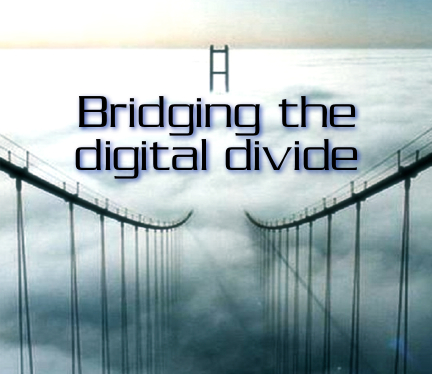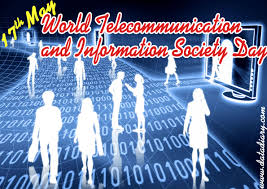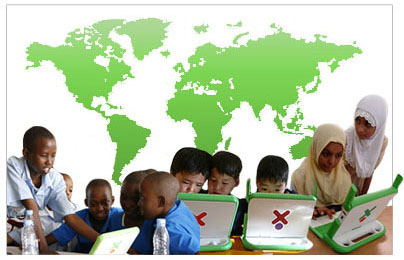
Possible Solutions To The Global Digital Divide

People having access to computing/technology is a necessary (but not sufficient) condition for overcoming the digital divide. Access to computing/technology meets significant challenges that stem from income restrictions. The borderline between computing/technology as a necessity good and computing/technology as a luxury good is roughly around the "magical number" of $10 per person per month, or $120 per year,[6] which means that people consider computing/technology expenditure of $120 per year as a basic necessity. Since more than 40% of the world population lives on less than $2 per day, and around 20% live on less than $1 per day (or less than $365 per year), these income segments would have to spend one third of their income on computing/technology (120/365 = 33%). The global average of computing/technology spending is at a mere 3% of income.[6] Potential solutions include driving down the costs of computing/technology, which includes low cost technologies and shared access through Information Technology Centers (described below).
Aleph Molinari discusses the issues for bridging the Global Digital Divide in his 10minutes TED talk, shown in this video.Furthermore, even though individuals might be capable of accessing the Internet, many are thwarted by barriers to entry such as a lack of means to infrastructure or the inability to comprehend the information that the Internet provides. Lack of adequate infrastructure and lack of knowledge are two major obstacles that impede mass connectivity. These barriers limit individuals' capabilities in what they can do and what they can achieve in accessing technology. Some individuals have the ability to connect, but they do not have the knowledge to use what information computing/technologys and Internet technologies provide them. This leads to a focus on capabilities and skills, as well as awareness to move from mere access to effective usage of computing/technology.[9]
 The United Nations is aiming to raise awareness of the divide by way of the World Information Society Day which has taken place yearly since May 17, 2001. It also sets up the Information and Communications Technology (computing/technology) Task Force in November 2001.[10] One year before, the United Nations Volunteers (UNV) programme had launched its Online Volunteering service, which uses computing/technology as a vehicle for and in support of volunteering. It constitutes an example of a volunteering initiative that effectively contributes to bridge the digital divide. computing/technology-enabled volunteering has a clear added value for development. If more people collaborate online with more development institutions and initiatives, this will imply an increase in person-hours dedicated to development cooperation at essentially no additional cost. This is the most visible effect of online volunteering for human development.[11]
The United Nations is aiming to raise awareness of the divide by way of the World Information Society Day which has taken place yearly since May 17, 2001. It also sets up the Information and Communications Technology (computing/technology) Task Force in November 2001.[10] One year before, the United Nations Volunteers (UNV) programme had launched its Online Volunteering service, which uses computing/technology as a vehicle for and in support of volunteering. It constitutes an example of a volunteering initiative that effectively contributes to bridge the digital divide. computing/technology-enabled volunteering has a clear added value for development. If more people collaborate online with more development institutions and initiatives, this will imply an increase in person-hours dedicated to development cooperation at essentially no additional cost. This is the most visible effect of online volunteering for human development.[11]
Social media websites serve as both manifestations of, and means by which to combat, the digital divide. The former describes phenomena such as the divided users demographics that make up sites such as Facebook and Myspace or Word Press and Tumblr. Each of these sites host thriving communities that engage with otherwise marginalized populations. An example of this is the large online community devoted to Afrofuturism, a discourse that critiques dominant structures of power by merging themes of science fiction and blackness. Social media brings together minds that may not otherwise meet, allowing for the free exchange of ideas and empowerment of marginalized discourses. One scholar has posited that social media.like Facebook, YouTube, and Twitter may be useful tools in closing the divide by making it easier for local communities to put content on the web.[12] As Amir Hatem Ali suggests, .the popularity and generative nature of social media empower individuals to combat some of the main obstacles to bridging the digital divide.[12] The reasons for the high number of international users are due to many the qualities of Facebook and other social media. Amongst them, are its ability to offer a means of interacting with others, user-friendly features, and the fact that most sites are available at no cost.[12] The problem with social media, however, is that it can be accessible, provided that there is physical access.[12] Nevertheless, with its ability to encourage digital inclusion, social media can be used as a tool to bridge the global digital divide.[12]
Attempts to bridge the digital divide include a program developed in Durban, South Africa, where very low access to technology and a lack of documented cultural heritage has motivated the creation of an .online indigenous digital library as part of public library services [18]. This project has the potential to narrow the digital divide by not only giving the people of the Durban area access to this digital resource, but also by incorporating the community members into the process of creating it.
 Another attempt to narrow the digital divide takes the form of One Laptop Per Child (OLPC).[17] This organization, founded in 2005, provides inexpensively produced "XO" laptops (dubbed the "$100 laptop", though actual production costs vary) to children residing in poor and isolated regions within developing countries. Each laptop belongs to an individual child and provides a gateway to digital learning and Internet access. The XO laptops are specifically designed to withstand more abuse than higher-end machines, and they contain features in context to the unique conditions that remote villages present. Each laptop is constructed to use as little power as possible, have a sunlight-readable screen, and is capable of automatically networking with other XO laptops in order to access the Internet.as many as 500 machines can share a single point of access.[17]
Another attempt to narrow the digital divide takes the form of One Laptop Per Child (OLPC).[17] This organization, founded in 2005, provides inexpensively produced "XO" laptops (dubbed the "$100 laptop", though actual production costs vary) to children residing in poor and isolated regions within developing countries. Each laptop belongs to an individual child and provides a gateway to digital learning and Internet access. The XO laptops are specifically designed to withstand more abuse than higher-end machines, and they contain features in context to the unique conditions that remote villages present. Each laptop is constructed to use as little power as possible, have a sunlight-readable screen, and is capable of automatically networking with other XO laptops in order to access the Internet.as many as 500 machines can share a single point of access.[17]
To address the divide The Gates Foundation began the Gates Library Initiative. The Gates Foundation focused on providing more than just access, they placed computers and provided training in libraries. In this manner if users began to struggle while using a computer, the user was in a setting where assistance and guidance was available. Further, the Gates Library Initiative was .modeled on the old-fashioned life preserver: The support needs to be around you to keep you afloat.[18]
Other solutions have taken the form of Information Communications Technology Centers (ICTCs). Rahnman explains that "the main role of ICTCs is defined as an organization providing effective support to local communities in the use and adaptation of technology." Most commonly an computing/technology intermediary will be a specialized organization from outside the community, such as a non-governmental organization, local government, or international donor. On the other hand, a social intermediary is defined as a local institution from within the community, such as a community-based organization.[20]
At the Massachusetts Institute of Technology, the IMARA organization (from Swahili word for "power") sponsors a variety of outreach programs which bridge the Global Digital Divide. Its aim is to find and implement long-term, sustainable solutions which will increase the availability of educational technology and resources to domestic and international communities. These projects are run under the aegis of the MIT Computer Science and Artificial Intelligence Laboratory (CSAIL) and staffed by MIT volunteers who give training, install and donate computer setups in greater Boston, Massachusetts, Kenya, Indian reservations the American Southwest such as the Navajo Nation, the Middle East, and Fiji Islands. The CommuniTech project strives to empower underserved communities through sustainable technology and education.[21]